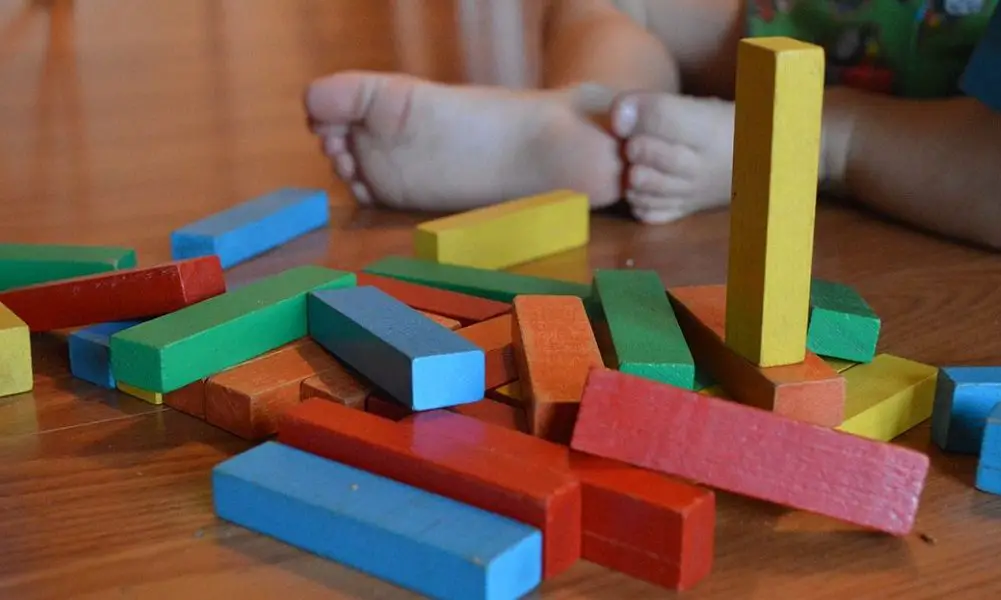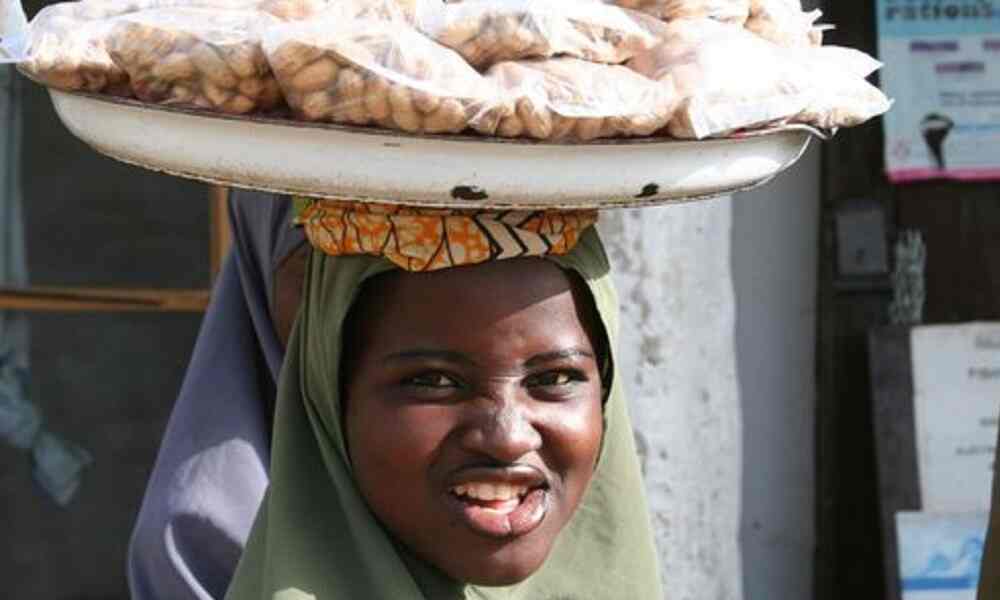I had that thought for quite a long time until I came across a quote by chance saying:
Play is often talked about as if it were a relief from learning, but for children, play is serious learning, Play is really the work of childhood.
Fred Rogers
The above quote somehow stuck to my mind that each time I saw a child deeply engrossed in a playful activity, I looked on with newfound interest. This saying kept bugging my mind and with time, it started changing my perspective.
My mind got curious and I tasked myself to find out why children got engaged in such activities and what they hoped to achieve in doing so. Although, I did not have many tools to discover why. It kept dawning on me that there could be an end goal in sight as I continued to observe him. Perhaps, there was another reason why a child spends hours making sandcastles other than the fact that he/she simply just has much free time.
So was there a way to unfold mysteries behind a child’s mind in ways we can understand them as unique intelligent beings rather than mindless individuals? And what is the need to find an answer to this rising question?
While pondering over the latter, I came across another quote by Jess lair saying
Children are not things to be molded but are people to be unfolded
It then dawned on me how as mothers, we owed it to them to learn how to understand, encourage and guide them to explore their inner potentials. This is essential considering how the home is the first school of a child.
We must, first of all, understand that every child is unique; can learn and develop in different ways and at different rates in enabling environments, and also every child can learn to be strong and independent through positive relationships.
Although it bugs me that some mothers do not pay attention to these similarities and differences, one thing that is clear is we cannot continue to pretend as if children no matter how young, lack thoughts and feelings of their own and that a wrong move could form long-lasting damage to their mental health and more.
This made me visit and explore the concept of Montessori education to aid me to view the world through the lens of a child.
What is Montessori Education?
Founded by Italian doctor, Dr. Maria Montessori and named after her, Montessori education is a child-centered philosophy that developed through scientific observation of children in mental health facilities in 1897 Rome. Maria’s careful observation and experimentation of children, their environment, and methods of learning led her to develop her educational philosophy which she described as a ‘Model of human development. There were two principles guiding this theory.
The first was that children and developing adults engaged in self-constructed psychological development through interaction with the environment. The second emphasized children especially those under the age of six as having an ‘innate path’ of psychological development. Based on this theory, Maria Montessori saw that for a child, the freedom to choose and act freely within a prepared environment would make the child act spontaneously for optimal development.
In other words, the Montessori Method attempts to develop children physically socially, emotionally, and cognitively by regarding the child as the initiator of learning and describing him as one who is eager to learn in a prepared learning environment.
Montessori Education in Northern Nigeria
The Montessori system of education in schools has generally found a wide range of applications in Nigeria from daycare programs, kindergartens, and elementary schools. From the early 2000s, Nigeria has successfully implemented Montessori teacher-training programs as well as applied the concept of a safe environment and curriculum.
However, the existence of issues ranging from lack of sufficient training in self-acclaimed teachers to overcrowding of classrooms has proven to pose a stunt in its growth. This shows that a well-learned individual on a one-on-one relationship such as the one between a mother and child on a daily basis could revolutionalise its existence.
As such, many countries have adopted Montessori methods in their homes.
Montessori in Nigerian Homes
Most schools guided by the Montessori curriculum are schools that are located in the southern regions of Nigeria. These include states like Lagos, Port Harcourt, Ondo, and only a few in Northern Nigeria which are mostly located in the Federal Capital Territory in the North-Central. Its knowledge and application seem to be limited as northerners are generally more conservative.
However, we need not wait for its widespread in schools located in Northern Nigeria before we can apply it in our homes. Women in many regions within and outside Nigeria have already adopted Montessori education at home.
Similarly, the lifestyle of Northern Nigerian women in Nigeria proves to be especially suitable for the application of Montessori methods in the home for the following reasons:
Montessori years begin at pre-school or homeschooling age, that is from 0-3 years as in Northern Nigeria.
Most northern Nigerian women especially housewives would have ample time to spend with their children.
The one-on-one relationship gives a mother the mentorship advantage.
Northern Nigerian mothers can conveniently create a personalized learning environment for the children for learning and development using local materials and methods.
How to Implement Montessori in Your Home Using These 5 Steps
How does a woman begin implementing Montessori at home? Does she jump to the first video tutorial she sees on YouTube?
A woman needs to understand that there are a variety of ways of implementing Montessori at home that needs to tally with the individual needs of the child. When it comes to Montessori, the one-size-fits-all is not advisable. These five steps will guide a woman on ways to start implementing Montessori in her home;
Step 1: Assess Personal Discipline Style
The Montessori Method gives wide room for the child to do what he wants. A mother might consider coming up with a positive rather than a negative approach to maintaining discipline.
Step 2: Assess Your Space
Look around your home and include your child’s needs in the space. For example, provide a low bed he can climb up and down on his own, or provide his very own low utensil cabinet in the kitchen.
By doing things on his own, it will enable him to achieve confidence, independence, and self-sufficiency.
Step 3: Follow Your Child
This step is the most important when implementing Montessori at home. Observe your child’s most minimal behaviours like how he twists his fingers, eats, and communicates. This will enable you to find out where your child is developmental as an individual. It is more recommended than comparing him to his age mates or siblings since every child is unique.
You also need to know;
What motivates your child?
Consider his sensitive periods
Find out which schema he belongs to
Some of these will be explained more in detail as we progress.
Step 4: Prepare the Environment
Make the environment safe for your child. Constantly buy or recycle his toys when he begins to show disinterest in the ones he is using.
Also, allow him to choose which toy he wishes to use. In this step, make sure you remove yourself and try not to influence his choices with your personal thoughts or actions.
Step 5: Practical Life
Involving your child in your every day will make him feel like a valued member of the family. Talk to your child constantly, ask them questions even if it means providing the answer yourself. Engage him in formal practical life activities like helping to wipe the table or doing the dishes. This will give him an added sense of belonging and responsibility.
Be careful not to overburden him though, such that he won’t feel like it is a chore and lose interest. In that case, don’t force your child as that will only make him lose interest more.
What to Know Before Implementing Montessori at Home
Incidentally, there are mental tools the northern Nigerian mother needs to equip herself with before embarking on the journey of becoming a Montessori mentor to her child. Concepts that need to be explored will better inform her of the choices she will make in the future.
1. Child Development Ages and Stages
The growth and development of a child may occur at different paces for children, but generally, they usually exhibit similar characteristics within a stipulated time. These have been categorized into six stages with each exhibiting mean characteristics. The period between 0-3 years are outlined as follows:
- Birth to three months: Behavioral characteristics of babies in this time include kicking, stretching, responding to loud noises, and grasping at things like your finger.
- Four to six months: At this time, babies are more social and interested in their surroundings. They grab toys, grab hair or hold toys, laugh and squeal more, blow bubbles, and generally sleep longer.
- Seven to twelve months: Babies engage in mobile activities like rolling over, crawling, standing, and strength testing.
- One to two years: A child becomes more conscious of behaviors of himself and others. He is eager to learn and starts communicating through words and facial expressions.
- Two to three and a half years: Toddler begins developing a distinct personality and changes in his social, intellectual, and emotional activities. He is constantly exploring so safety is paramount and needs a lot of attention
2. Principles of Montessori Education.
There are many principles guiding Montessori education but whether at home or in school, these five principles are key in practising the Montessori Method:
- Children are shown respect and taught kindness through demonstration by the mentor
- Children have absorbent minds and as such, are always eager to learn from their environment
- Sensitive periods for children are critical for heightened learning. Mentors should seize this to provide resources and opportunities for optimal learning
- Children learn best in a prepared environment: Provide a variety of materials and organise resources for individual selection of the child in a safe and free environment
- Children can teach themselves through auto-education by active exploration: Encourage them by introducing new materials in a prepared environment.
3. Sensitive Periods of Development of a Child
This is a period of a child’s natural burning interest in something. Maria Montessori recognized eleven basic sensitive periods of development of children regarding them as windows of opportunity. They include movement, math patterns, emotional control, order, interest in small objects vocabulary, sensations, letters shapes and sounds, music, and writing.
- Movement: Born with limited movement control, children develop cognitive abilities as they learn to use their bodies.
- Math patterns: Montessori informs us that babies are born with mathematical minds
- Need for order: Children, (six months to three years) desire order and throw tantrums if the order is disrupted.
- Interest in small objects: Leads to development of fine motor control and the pincer grasp essential for writing and other important skills
- Vocabulary: Children (under the age of six) are hardwired for language acquisition
- Sensation: Children (between two and a half to five years) are drawn to tracing textured letters with their fingers while matching the sound of a letter to its shape
- Letters, shapes, and sounds: Children becoming sensitive and interested in these
- Music: Children (three years) experience a sensitive period for learning rhythm, pitch, and more. It develops their brain and leads to academic, social, and emotional growth.
- Writing and Reading: Children are open to the right information at the right time. When ready for them, learning is a natural continuous process.
4. The Concept of a Schema
An important aspect of Montessori education is the concept of schema. A schema is a set of instructions one creates through repetitive trial and error. This proves to find the best and efficient ways of completing tasks.
There are eight schemas outlined by Montessori which children may use varyingly at different periods including connecting, orientation, Transporting, trajectory, positioning, enveloping, enclosing, and rotation.
- Connecting: a child may connect and disconnect a tower of blocks in an effort to understand how things come together and fall apart. By doing this, he understands, strength, stickiness, purchase, and slippiness,
- Orientation: A child may swing upside down to discover seeing things from a different point of view. This builds their confidence in physical activities when anticipating how a player might move.
- Transporting: A child may move items from point A to B to see something happen as a result of their hard work and gain pleasure from it.
- Trajectory: A child may drop food from his chair or watch a pendulum in action. These develop into throwing, catching, kicking, and driving skills.
- Positioning: A child may arrange toys or create scenes and displays. This will help later in maintaining neat works in school books or placing shoes under pegs.
- Enveloping: A child may enjoy filling empty boxes to discover what happens if they hide or wrap an object.
- Enclosing: A child may want to create an enclosure for his toys in an effort to learn how to create boundaries. Eventually, enclosing skills leads to learning letter formation.
- Rotating: A child may twirl round or watch the washing machine that eventually leads to understanding rotational symmetry in mathematics.
Conclusion
In this article we have journeyed through and learned the following:
- Children begin their developmental and cognitive journey from a young age (0-3 years) which compels us to understand and guide them.
- Montessori is a befitting guide to raising and educating our children because of its child-centered nature which assists us in understanding our child.
- The northern Nigerian mother is the best person to begin a Montessori child’s journey before school due to her domestic lifestyle and position which gives her a mentorship advantage.
- The northern Nigerian mother needs to understand every child is different and equip herself with basic child development knowledge and Montessori concepts before jumping into implementing Montessori at home.
Also, the write-up also advises the future or already practising Montessori mother to:
- Treat every child as a separate individual and realize his needs are dynamic.
- Prepare the child’s environment and space based on the child’s existing schema and seize a child’s sensitive period to educate him.
- Keep constantly researching about Montessori methods.
Thank you for your time and I hope you enjoyed the read.










Insightful.
i have always wonder what system of education this is and how it could be implemented outside the confines of the classroom.